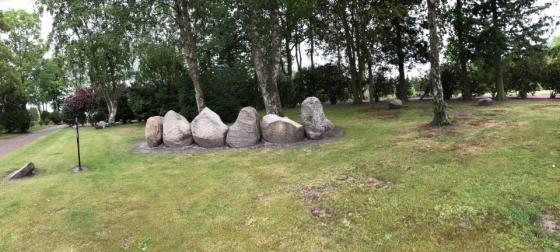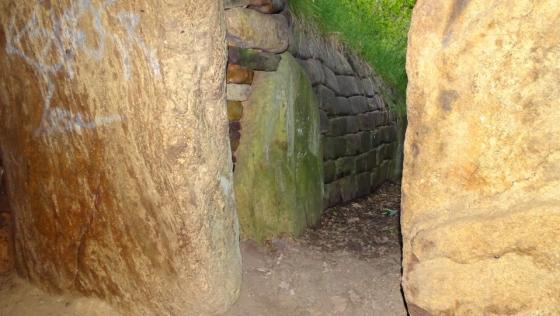taken from the on-site information board:
The rebuilt megalithic tomb of Frestedt
Reconstruction after 5000 years in Albersdorf
On a spur in the grazed area lies a small Neolithic burial chamber with the entrance on the narrow side, a so-called dolmen (from Breton for “stone table”). This comes from Frestedt and was rebuilt here. The complex gives an impression of how the megalithic tomb may have looked at the time of their construction with the mound of earth only partially covering the capstone.
The large stone graves, also known as megalithic tombs (mega=large, lithos=stone), belong to the new stone age, known as the Neolithic period (4,100 – 1,700 BC).
The numerous megalithic tombs built in the period between 3,500-3,000 BC have shaped our landscape for thousands of years until today. The people no longer lived from hunting and the gathering of food, they had become sedentary farmers. Through livestock and farming, they changed the environment to a much greater extent than in previous times. After the characteristic vessels with a funnel-shaped rim, the culture was given the name “Funnel Beaker Culture”.
A distinction is made between different types of megalithic tombs. The oldest form seems to be the dolmen with an entrance on the narrow side. In so-called passage graves, a passage begins at right angles or at an angle to the chamber. This form of megalithic tomb is younger on average than that of the dolmen. With the stones used, the supporting stones, the smooth side points inwards if possible, the gaps are filled with flat dry masonry. In the burial chamber there was a floor covering made of burned flint. Mighty boulders served as the capstones. Dolmen or passage graves can, as seen here, be surrounded by a round burial mound. Sometimes these round mounds were expanded to accommodate additional burial chambers. This expansion resulted in extensive sites such as the so-called long beds or long barrows.
Halfway to the dolmen, next to several boulders, a model can be seen that shows how we had to imagine transporting stones on wooden rolls at that time. In this way, one can only guess at the great amount of effort that people at the time required ...











